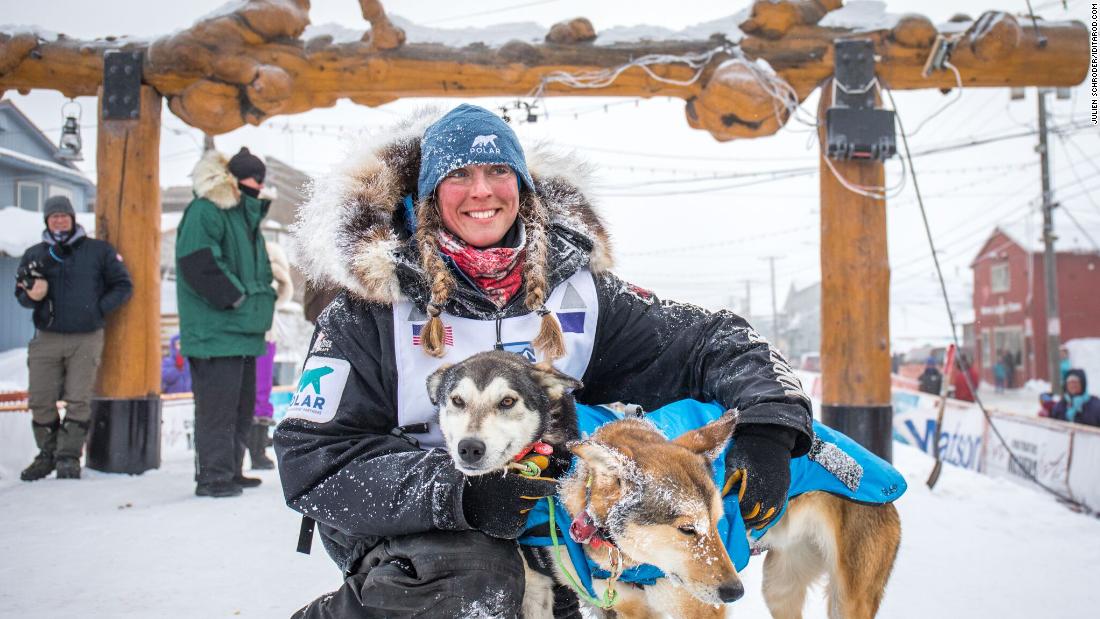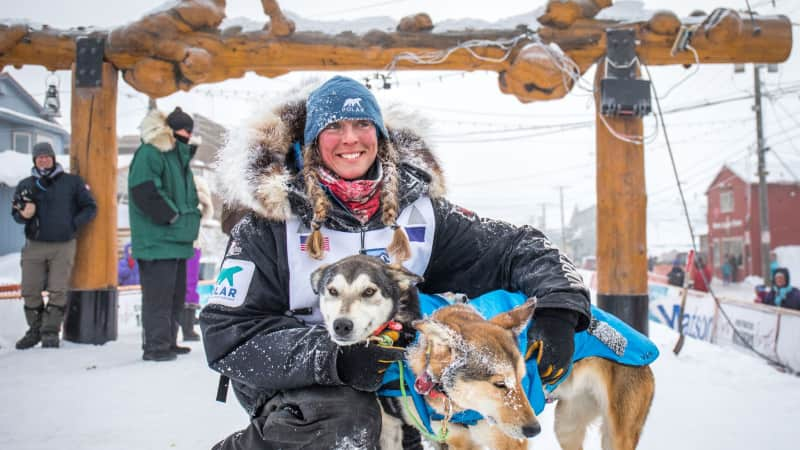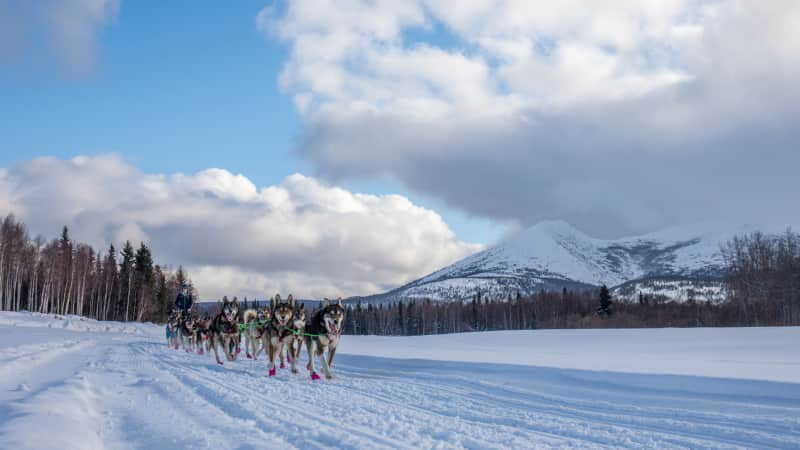An earlier version of this story published in 2012.
Anchorage, Alaska (CNN) — It’s a competition that brings out some of the toughest, hardiest, most ferociously determined athletes in the world. In fact, most of the competitors in this sport aren’t even human.
It’s a race boasting more mileage and fur coats than perhaps any other on the planet — worn by both participants and spectators bundled from head to toe to face a punishing Alaska winter. Dubbed the “Last Great Race” by organizers, the Iditarod sled dog trail in Alaska is legendary, taking place every year on the trail between Anchorage and Nome.
Iditarod spectators often have to brave Anchorage weather just to get a glimpse of their favorite teams — howling at top of their lungs in anxious anticipation of their turn at the starting point. The nearly 1,000-mile race covers some of the most extreme terrain on Earth, each team powered by 64 booted paws and a musher’s dogged desire to be the first to reach the finish line on the Bering Sea Coast.
An annual Alaska event
The trail covers up to 1,000 miles, so spectators must first determine which portion of the race they aim to see.
The ceremonial start of the race is, by far, the most popular choice of fans seeking access and convenience. There are a number of events in and around Anchorage leading up to the Iditarod start, such as the Mushers’ Banquet, various Iditarod educational seminars featuring mushers and race officials, and even a competing annual festival and parade in Anchorage, the Fur Rondy.
A celebratory send-off

Musher Matt Failor gets friendly with Pantera, a dog in his team, prior to the ceremonial start.
Michael Dinneen/AP
On the first Saturday of March, thousands of Iditarod enthusiasts line Anchorage’s historic Fourth Avenue to participate in the celebratory send-off. Race officials personally introduce each team as they depart “the chute,” announcers struggling to be heard over a cacophony of howling dog teams. Mushers and their dogs often don festive regalia at the noncompetitive ceremonial start while also toting warmly bundled “Iditariders” in their sleds.
Iditariders are fans who bid on a ceremonial sled ride as part of a program which helps to support the race financially. The chance at a ceremonial 11-mile Iditarod sled ride begins at $500 and can cost as much as $7,500 for the opportunity to experience the event in a sled driven by a popular race champion.
Following a Saturday ceremonial start, mushers quickly regroup their dog teams and reorganize trail necessities for the following day’s “official start” of the race in Willow, Alaska, 79 miles north of Anchorage. Spectators who travel to Willow by car or shuttle bus can once again line “the chute” on Sunday afternoon to cheer on mushers as the race clock officially begins.
Over 20 remote checkpoints
However, for those seeking a more intensive race experience, travel operators offer various “flightseeing” and snowmobile excursions in order to catch mushers crossing through some of the more than 20 remote checkpoints. The price to travel across the diverse Alaskan landscape by bush plane can be expensive during the Iditarod, but the experience is almost always described as unforgettable.
The Gold Rush-era town of Nome is the end of the trail where the famous Iditarod “burled arch” forms the finish line. Crowds of spectators line narrow, snow-packed Front Street to greet the winner. A loud siren sounds day or night throughout Nome announcing the arrival of teams nearing the finish line.
Hotels in Nome, however, are scarce and must be booked months in advance for die-hard fans and visitors hoping to be present when the leaders arrive. For other spectators happy to simply get any glimpse of the remaining teams’ arrivals at the finish line, opportunities continue for approximately a week.
While the Iditarod may be known as “The Last Great Race,” there’s no sign it’s coming to an end anytime soon. If you’re unable to witness this year’s race at points along the trail, the following year promises to deliver yet another compelling Iditarod — a truly Alaskan experience.
CNN’s Kristen Rogers and Karen Denice contributed to this story.


